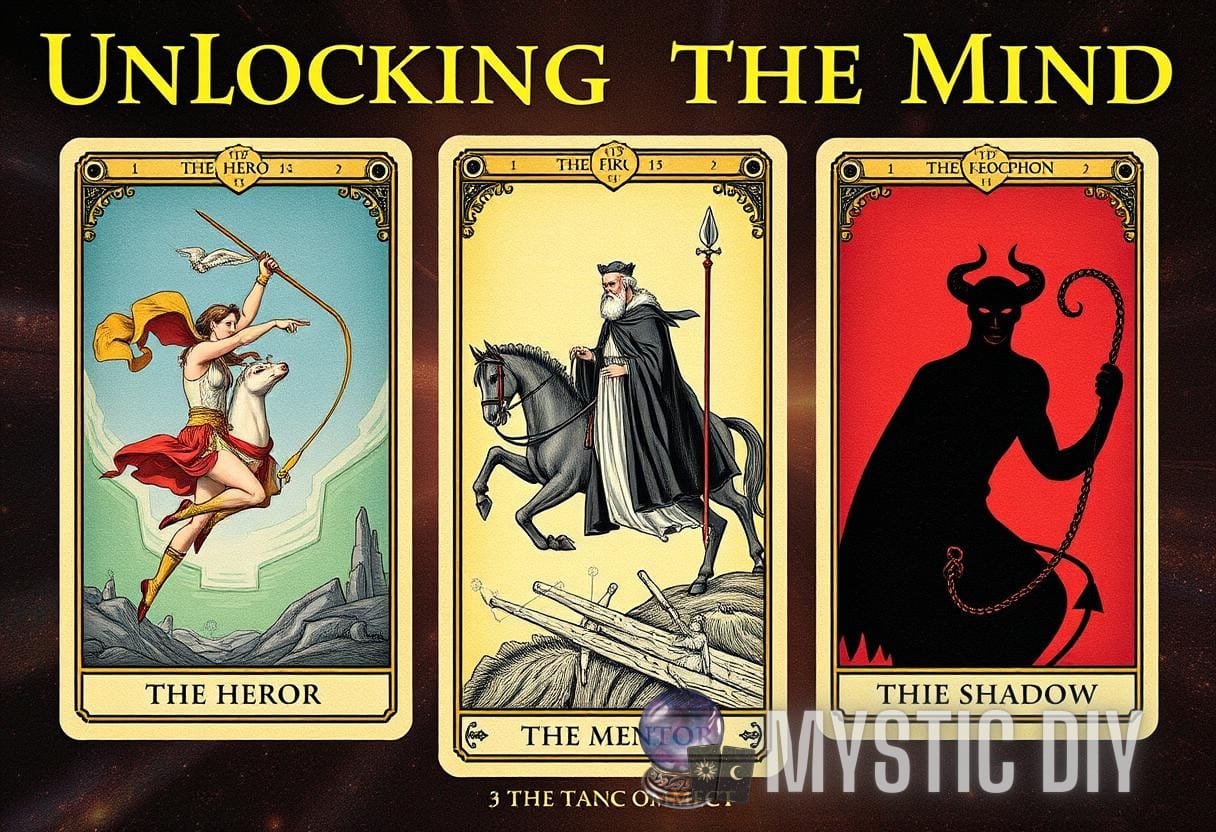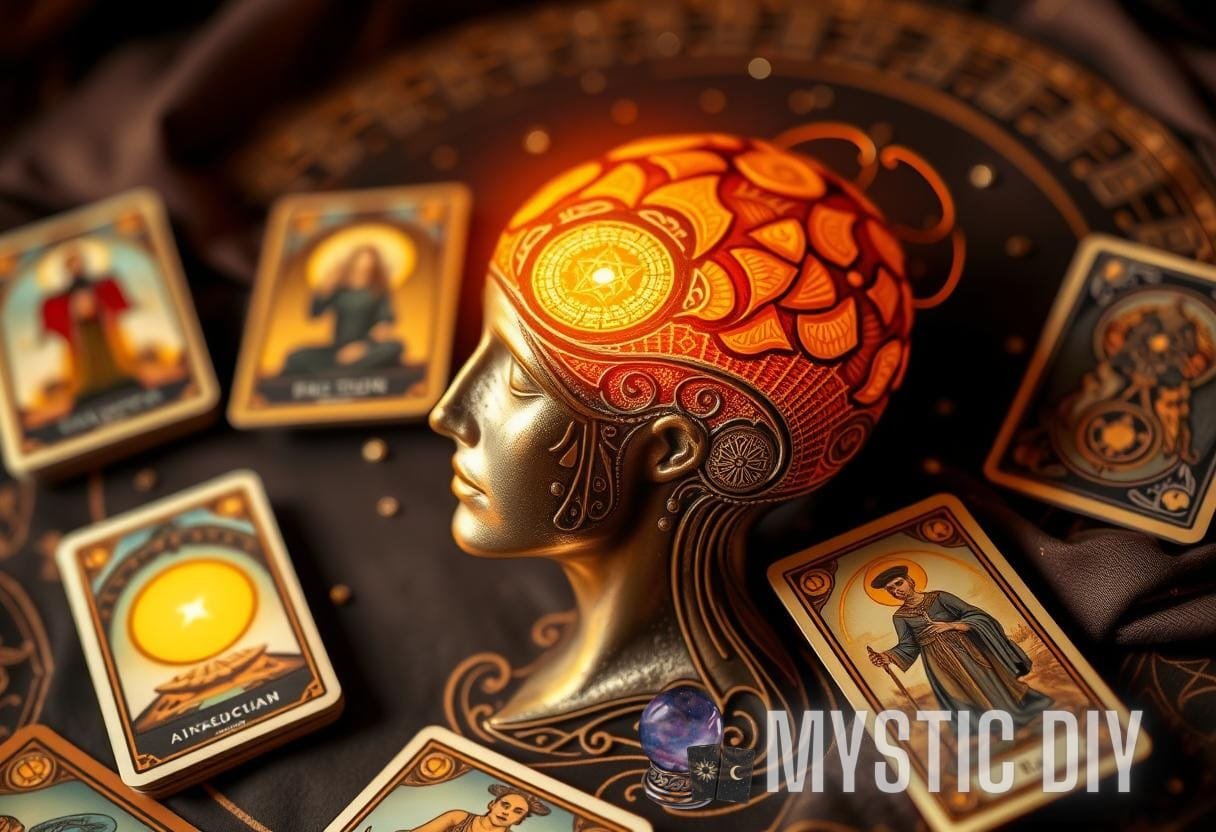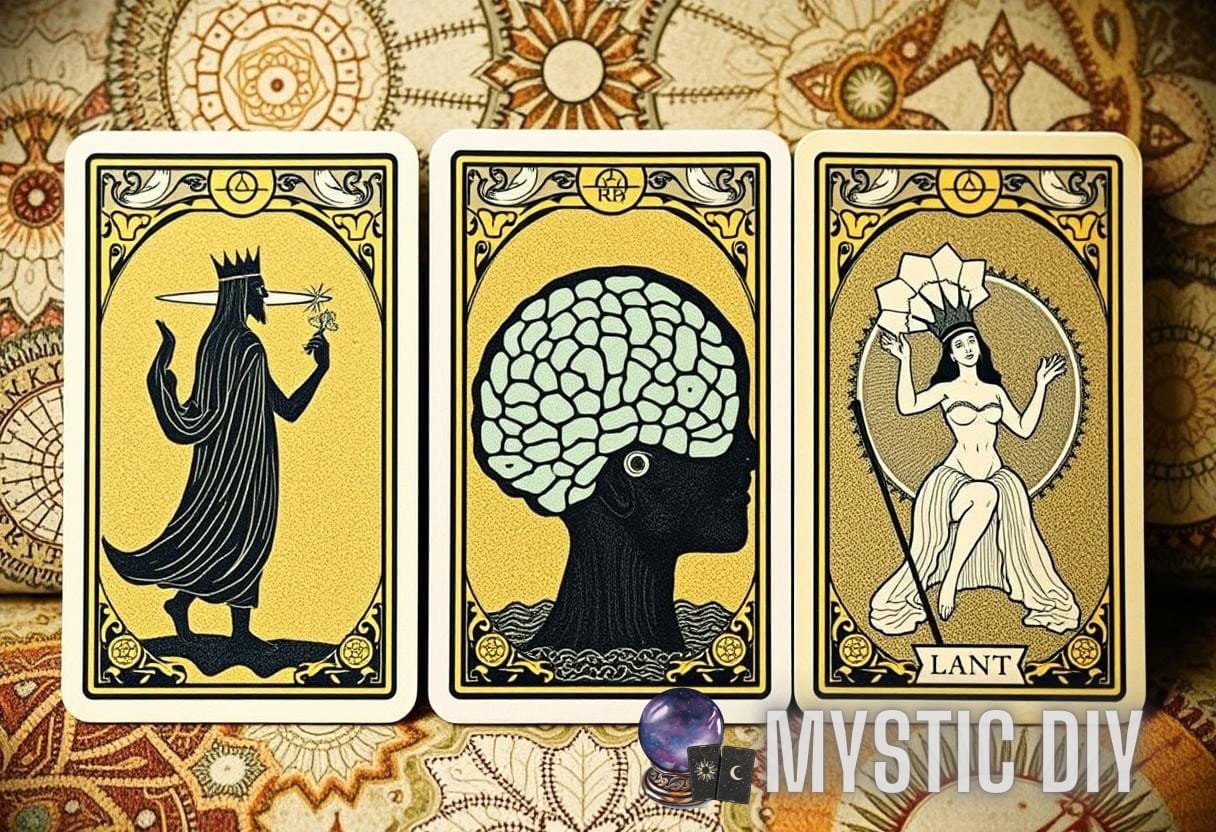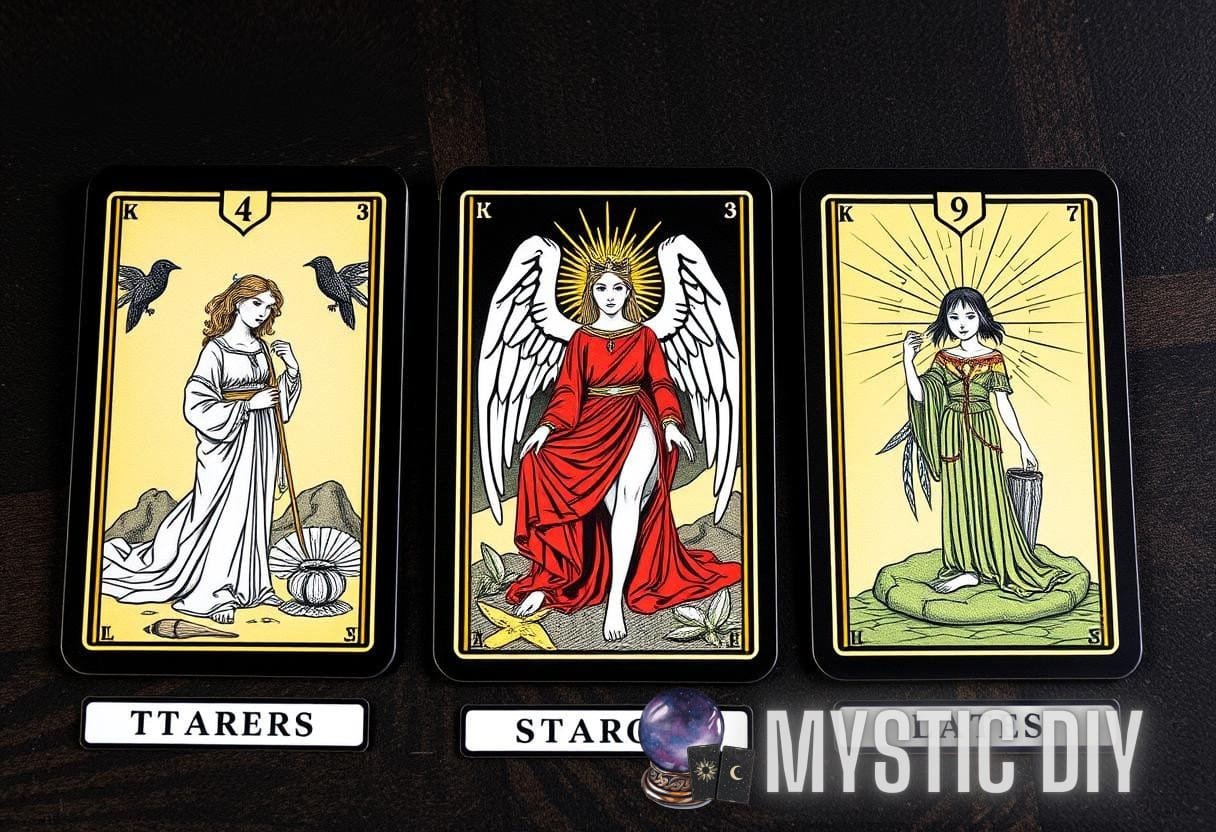Neurosymbolism in Tarot: Bridging Cognitive Science and Archetypal Imagery for Personal Insight
In recent years, the intersection of psychology, neuroscience, and mystical practices has garnered increasing interest. This elaborate tapestry becomes captivatingly vivid when discussing neurosymbolism in tarot, an enchanting practice used for divination, self-reflection, and personal growth. This comprehensive guide aims to unravel the complexities of the neurosymbolism tarot guide, showcasing how cognitive science interacts with archetypal images, influencing personal insights that resonate on emotional and intellectual levels.
What is Neurosymbolism?
Neurosymbolism is an interdisciplinary concept that examines the intricate relationship between the mind’s symbolic processing and the underlying neural pathways that support these processes. It acknowledges that symbols, in this case, the imagery found in tarot cards, have profound meanings shaped by both individual experiences and collective human archetypes.
According to Carl Jung, a notable figure in psychoanalysis, symbols carry deeper meanings and serve as windows into the collective unconscious. Jung’s theories on archetypes suggest that universal symbols appear across various cultures, resonating with our shared human experience. This is particularly relevant when analyzing the major arcana of the tarot, which depicts archetypes representing different life stages and emotional landscapes.
The Science of Symbolism and Cognitive Processing
Understanding how our brains process symbols is pivotal to grasping the full significance of tarot in the realm of neurosymbolism. The human brain contains around 86 billion neurons, and the intricate networks formed by these neurons significantly influence cognitive processing. Here are a few key points regarding cognitive processing related to symbolism:
- Symbolic Recognition: When we encounter symbols, our brains engage in a complex recognition process, activating memory areas tied to previous experiences and knowledge.
- Emotional Resonance: Neuroscience studies, such as those conducted by neuroscientist Antonio Damasio, indicate that emotions play a crucial role in decision-making and understanding symbols.
- Imagination and Visualization: The integration of symbolic images stimulates the imaginative faculties of the brain, fostering creativity and insight.
This backdrop emphasizes that engaging with symbols, such as those found in tarot, can impact cognitive functions and psychological states, thus providing profound personal insights.
Exploring Tarot Imagery Through Neurosymbolism
The tarot deck is rich with imagery that can be viewed through the lens of neurosymbolism. Each card embodies complex symbols often derived from mythology, nature, and psychology. Here are some noteworthy tarot cards and their corresponding symbolic significance:
- The Fool: Represents new beginnings and infinite possibilities, symbolizes the spirit of adventure.
- The Empress: Embodies fertility, abundance, and nurturing, connecting to the archetype of the mother.
- The Tower: Symbolizes sudden upheaval and enlightenment, challenging existing belief systems.
Research suggests that when individuals engage with such symbols, their brains can create novel associations and insights, as highlighted by studies conducted on personal development practices.
The Role of Archetypes in Tarot Reading
Archetypes represent recurring themes, images, or characters in narratives across cultures, often surfacing in myths and literature. Tarot is a modern interpretation of ancient archetypes, which harks back to various sources, including alchemy, astrology, and Kabbalistic traditions. Through the lens of neurosymbolism, tarot cards serve as a powerful medium that can assist individuals in unlocking their subconscious perceptions.
Key Archetypes in Tarot
Understanding significant archetypes within tarot allows users to effectively utilize the cards for introspection. Here are some essential archetypal figures that frequently appear in tarot:

- The Hero: Embodies courage and the pursuit of aspirations, visible in cards like The Chariot.
- The Mentor: Represents wisdom and guidance, evident in cards like The Hierophant.
- The Shadow: Signifies the darker, unconscious aspects of psychology, common in The Devil card.
Recognizing these archetypes during a tarot reading can help individuals connect with their inner narratives, enabling deeper insights into their lives.
Practical Applications of Neurosymbolism in Tarot
Utilizing the principles of neurosymbolism in tarot readings can significantly enhance personal growth and cognitive awareness. Here’s how one can implement these concepts in their practice:
- Mindful Engagement: Approach each card with intentional mindfulness; focus on the emotion and memory it evokes.
- Journaling: After readings, jot down reflections and associations, noting any new insights revealed through the symbols.
- Visualization Techniques: Practice visualization to enhance understanding; imagine cards as living experiences that evoke emotional or cognitive responses.
By systematically applying these strategies, individuals can effectively navigate their subconscious landscapes and gain clarity on their personal journeys.
Neurosymbolism and Emotional Healing
Emotional healing is another compelling aspect where tarot and neurosymbolism intertwine. Research shows that engaging with symbolic imagery can activate emotional release mechanisms within the brain. Several therapeutic modalities, such as art therapy, leverage this concept. Tarot can serve a similar purpose, allowing users to explore their feelings safely and constructively.
- Emotional Regulation: Tarot encourages users to confront and articulate their emotions. The imagery may initiate an important dialogue between the conscious mind and subconscious feelings.
- Reframing Perspectives: Through symbolic interpretation, one can reframe their understanding of difficult situations, leading to breakthrough moments.
- Developing Empathy: By engaging with a variety of archetypes, users can foster empathy, as they explore experiences beyond their own.
Such practices align with findings reported in the Journal of Emotion and Emotion Regulation, where symbolic representation plays a crucial role in emotional healing.
Scientific Studies Supporting Tarot and Neurosymbolism
Numerous studies underscore the brain’s engagement when interpreting symbols and archetypes. Research published in Psychological Science illustrates how symbolic processing can produce meaningful insights and emotional responses. Here are a few relevant findings:
- Studies indicate that engaging with symbols stimulates brain areas associated with emotional processing, such as the amygdala and hippocampus.
- Neuroscientific research conducted at the University of Zurich establishes a connection between crowdsourcing intuition and the subconscious mind, establishing a parallel to tarot practices.
- Literary reviews on therapeutic techniques reveal that incorporating symbolic imagery enhances emotional cognition and growth.
The implications of these studies reinforce the relevance of the neurosymbolism tarot guide in nurturing personal insight and facilitating transformative experiences.
Integrating Neurosymbolism into Personal Tarot Practices

To fully unleash the potential of tarot through neurosymbolism, practitioners can adopt some deliberate practices that marry both cognitive insights and intuitive exploration:
- Daily Draws: Practicing a daily card draw helps increase familiarity with card meanings and promotes ongoing engagement with symbolism.
- Group Readings: Sharing interpretations with others can provide diverse perspectives and new insights crucial in complex scenarios.
- Study and Research: Keeping up with recent findings in psychology, neuroscience, and tarot literature helps practitioners integrate new knowledge into their readings.
Incorporating these practices into personal reflection can increase the depth of understanding and lead to more impactful outcomes.
Case Studies: Empirical Experiences with Tarot and Neurosymbolism
Across diverse backgrounds, individuals have reported profound transformations through tarot practice informed by the principles of neurosymbolism. Here are a few illustrative case studies:
- Case Study 1: A therapist utilized tarot in sessions with clients struggling with anxiety. The cards helped clients visualize and articulate their feelings, paving the way for therapeutic breakthroughs.
- Case Study 2: A corporate coach integrated tarot imagery into leadership development workshops, where participants explored archetypes that resonated with their personal and professional journeys.
- Case Study 3: An artist engaged with tarot imagery as a stimulative process for creativity, leading to published artworks that resonated deeply with community themes.
These case studies demonstrate that the synergy of neuroscience and symbolic interpretation fosters insights that transcend traditional understanding.
Challenges of the Neurosymbolism Tarot Guide
While the intersection of tarot and neurosymbolism presents enriching opportunities, there are underlying challenges as well. Awareness of these issues can lead to more informed practices:
- Over-Reliance on Symbols: Tarot is often misused as a definitive roadmap rather than a tool for introspection; it’s essential to balance insights with practical decision-making.
- Misinterpretation: Each individual’s relationship with symbols requires careful consideration; misunderstandings can arise when engaging with complex images.
- Therapeutic Boundaries: Individuals should avoid therapeutic applications without appropriate training, as symbolism may touch on sensitive areas requiring professional guidance.
By acknowledging these challenges and approaching tarot with a balanced mindset, practitioners can mitigate potential pitfalls and foster a constructive environment for personal growth.
Conclusion: The Future of Tarot Through Neurosymbolism
The practice of tarot, when viewed through the lens of neurosymbolism, provides a fresh perspective on personal insight and cognitive engagement. As neuroscience continues to unravel the mysteries of the human brain, the potential for integrating such insights into everyday practices, including tarot, remains vast. This neurosymbolism tarot guide serves as a framework for continued exploration and understanding, encouraging individuals to forge connections between symbolic imagery and their cognitive experiences.
As the popularity of tarot grows, merging ancient practices with modern scientific narratives illuminates new pathways for understanding ourselves and the world around us.
For those interested in further exploring these concepts, consider delving into resources that combine psychology and spirituality, such as JSTOR or Psychology Today.
Additionally, readers can deepen their knowledge of tarot by exploring articles on Understanding Archetypes in Tarot and Utilizing Tarot for Emotional Healing.



